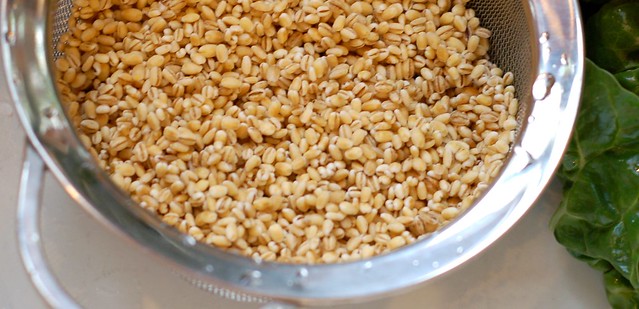The sun has finally decided to grace us with her presence after literally weeks of rain and generally unrelieved gray gloom. I have not yet found it in my heart to completely forgive the golden orb for her horrendous desertion -- perhaps I'll rise to the occasion in another few days -- if they are sunny ones...
Despite the lingering mistrust in my heart, my mood lifted as soon as I felt the first ray of sunshine on my face. And, perhaps more importantly, my focus has shifted from comfort food to more seasonally appropriate delights, including grilling and EATING OUTSIDE!
I am also on a quest to put a dent in the piles of meat in our chest freezer so I decided to kill two birds with one stone by marinating some chops from a piggy that was raised on a friend's farm across the river in Rhinebeck to toss on the grill.
I decided to accompany them with some decidedly non-local but surprisingly delicious peaches that were given to me by my mom-in-law a few days ago as she headed out of town. The peaches hail from Florida but now that they're here, I don't think it would be fair to hold that against them.
I've wanted to try grilling peaches for years - they always look so good in the magazines, ya know? I was primarily held back by my lack of bbq grill - we only got a real one two years ago. And by "real", I mean gas-powered -- my hat's off to those of you who like to cook with charcoal but I am lazy and almost never used our little charcoal Weber when we had it. But now we're cooking with gasoline, so to speak.
Unfortunately, this addition to our culinary equipage coincided neatly with the arrival of another, much more time-consuming addition, our son, Will. Needless to say, our adventures in grilling have taken a backseat to the raising of our child. But he's a big boy of two now -- walks, talks, runs, and even uses the potty sometimes -- and it's high time I grilled some f*@#ing peaches, for Christ's sake!
They say good things come to those who wait. And after eating these peaches (and the chops, too, of course), I am inclined to agree. I served the grilled chops and peaches with a side of quinoa and a salad of greens fresh from the garden - it was all good.
Hope you all enjoy the long weekend.
Grilled Marinated Pork Chops With Balsamic-Glazed Peaches
Serves 4
Ingredients
Pork Chops
* 4 good-sized, bone-in pork chops (get something you can feel good about eating - in addition to allowing you a clearer conscience, the meat will taste better, too)
* 1/2 cup olive oil
* 3/4 cup apple cider vinegar
* 1/4 cup honey or maple syrup
* 2 garlic cloves, pressed or minced
* 1 tsp kosher salt
* Few grinds black pepper
* Pinch of red pepper flakes
Peaches
* 6-8 ripe peaches
* 1 cup balsamic vinegar
* 1/4 cup molasses
* Few grinds black pepper
Directions
1. In a medium bowl, combine olive oil, vinegar, honey, garlic, salt, black pepper and pepper flakes. Whisk well to combine.
2. Add the pork chops, being sure to coat each one in marinade. Cover and put into the refrigerator and marinate for at least half an hour and up to 6 hours (turn the chops a few times to ensure that all the meat is getting equal access to your yummy marinade.)
3. While you're letting the chops marinate, rinse the peaches and cut them in half, taking care to remove any stems. Now it's time to make the glaze -- in a small saucepan over medium-high heat, bring the balsamic vinegar to a boil; reduce the heat to low and simmer until it is reduced by half, roughly 20-25 minutes. Stir in the molasses and the freshly ground black pepper. Remove from the heat and set aside.
4. Heat grill to medium high heat. Remove the pork chops from the marinade and place on the grill. Grill each pork chop for 3 minutes on each side, or until the internal temperature reaches 160 degrees. Don't be shy about checking for doneness.
5. Just before the chops are fully cooked, brush the peaches with the glaze and place the peaches on the grill cut-side down. Brush the top side of the peaches with the glaze and grill until they are lightly browned, approximately 2 minutes. Turn them over, brush the cut side with the balsamic glaze again and continue to cook for another 2 minutes.
You might also like:



